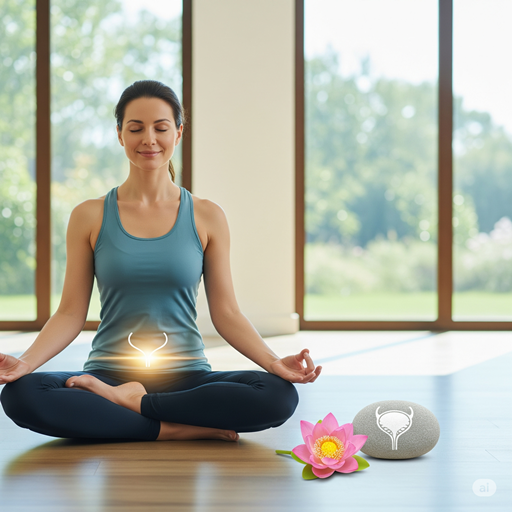Are you someone who constantly feels the need to rush to the bathroom? Do you worry about finding a restroom when you’re out, or does a sudden cough or sneeze make you anxious? If so, you’re not alone. Many people experience urinary urgency, frequency, and even incontinence, and while these can be caused by physical issues, they are often exacerbated by stress and anxiety.
The mind-body connection is powerful, and the bladder is no exception. Our bladders have a direct line to our nervous system. When we are stressed, our “fight or flight” response kicks in, and our muscles, including those in the bladder, can become tense. This can lead to a false sense of urgency, and a cycle of anxiety and urinary symptoms can begin.
The good news? You can use the power of your mind to calm your bladder. Mindfulness, the practice of being present and aware of the current moment without judgment, can be a highly effective tool for managing urinary symptoms. Here’s how you can practice mindfulness for your bladder.
1. The Art of Mindful Urination
Most of us rush to the toilet, often multitasking on our phones while we’re there. This mindless approach doesn’t help our bladder health. Instead, try practicing a few moments of mindfulness before, during, and after urinating.
- Before: When you feel the urge to go, pause for a moment. Take a deep breath. Instead of rushing, acknowledge the sensation without panic. Ask yourself, “Is this a real, strong urge, or is it just a habit?”
- During: Instead of tensing up, try to relax your muscles, especially in your pelvic floor. Focus on the feeling of releasing. This can help your bladder empty more completely and reduce the “just in case” urge.
- After: Take a moment to stand up slowly and mindfully. Notice how your body feels. This simple practice can help you become more attuned to your body’s signals and build a healthier relationship with your bladder.
2. The Urge Suppression Technique
This is a classic technique used in bladder retraining, but it’s fundamentally a mindfulness practice. The next time you feel a sudden, strong urge to urinate, instead of running to the bathroom, try these steps:
- Stop and Breathe: The moment you feel the urge, stop whatever you are doing. Take a few slow, deep breaths. This helps calm your nervous system and sends a signal to your bladder that there is no emergency.
- Distract Your Mind: Think about something else entirely. Name five things you can see, four things you can feel, three things you can hear, etc. This helps break the cycle of panic and urgency.
- Perform a Pelvic Floor Contraction (Kegel): Squeeze and hold your pelvic floor muscles for a few seconds. This can help quiet the bladder’s signal.
- Wait and Walk Slowly: After the urge subsides, walk calmly to the bathroom. Don’t rush. This reinforces to your brain and bladder that you are in control.
3. Body Scan Meditation
A body scan is a powerful mindfulness technique that can help you become more aware of tension in your body, including your pelvic area.
- Find a comfortable position: Lie down on your back or sit in a comfortable chair. Close your eyes.
- Start at your toes: Bring your attention to your toes, and then slowly move up through your feet, ankles, and calves, noticing any sensations.
- Move to your pelvic area: When you get to your pelvic region, a place many people hold a lot of tension, simply notice the sensations there. Don’t judge or try to change anything. Just observe.
- Breathe into the tension: As you notice tension, gently breathe into that area. As you exhale, imagine the tension melting away.
This practice can help you identify and release unconscious tension that might be contributing to your urinary symptoms.
4. The Power of Journaling
Keeping a simple journal of your symptoms can be a form of mindful awareness. Instead of just noting when you went to the bathroom, take a moment to reflect on your emotional state at the time.
- Were you feeling stressed, anxious, or relaxed?
- What were you doing right before the urge hit?
- Did the urge feel strong, or was it a mild sensation?
This simple act of observation can help you identify patterns and triggers, giving you a greater sense of control and reducing anxiety.
Conclusion
Mindfulness for the bladder isn’t about ignoring your body’s signals; it’s about listening to them more carefully and responding with calm and intention instead of panic. By incorporating these simple techniques into your daily life, you can reduce stress, improve your urinary control, and regain a sense of freedom and confidence. Your bladder—and your peace of mind—will thank you.

